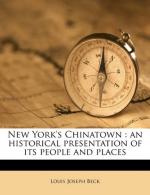|
This section contains 1,344 words (approx. 5 pages at 300 words per page) |

|
Tang Dance. During the Tang dynasty (618-907) dances were usually performed by one or two people and were divided into two styles: ranwu (soft dance) and jianwu (vigorous dance). With names such as luyao (green waist) and chunyingzhuan (twitter of spring oriole), soft dances were graceful and expressive with relaxed and relatively slow movements. Vigorous dances such as the jianqi (sword dance) were powerful and explosive with quick and complicated rhythms. Tang dance absorbed many elements from foreign dances, including the huxuan (barbarian spin) and huteng (barbarian jump) from western Asia. The barbarian spin was mostly performed by female dancers who could make quick and agile turns. The barbarian jump demonstrated the performer's ability to leap and quickly change steps. Tang actors and actresses also created new dances. Zhezhiwu (Cudrania twig), which included dance elements imported from Central Asia, was classed as both...
|
This section contains 1,344 words (approx. 5 pages at 300 words per page) |

|




